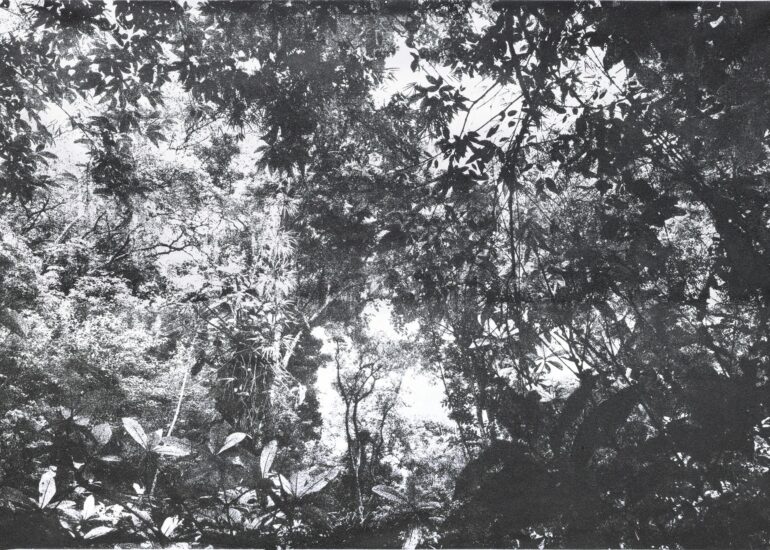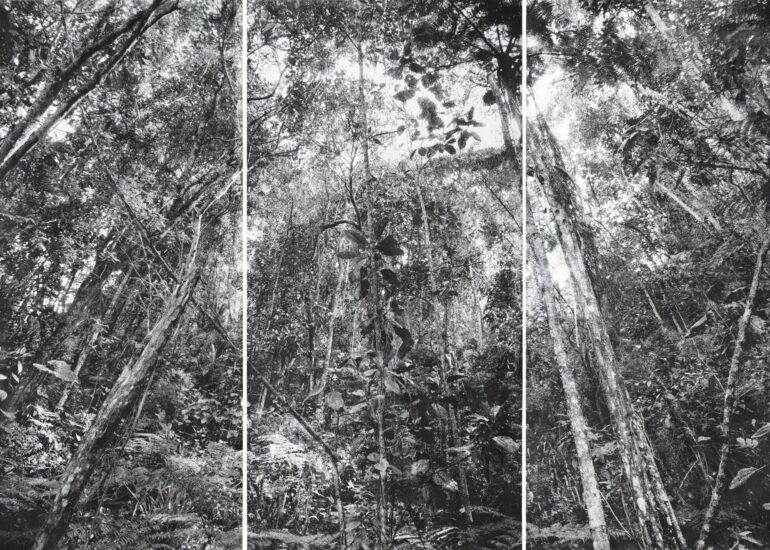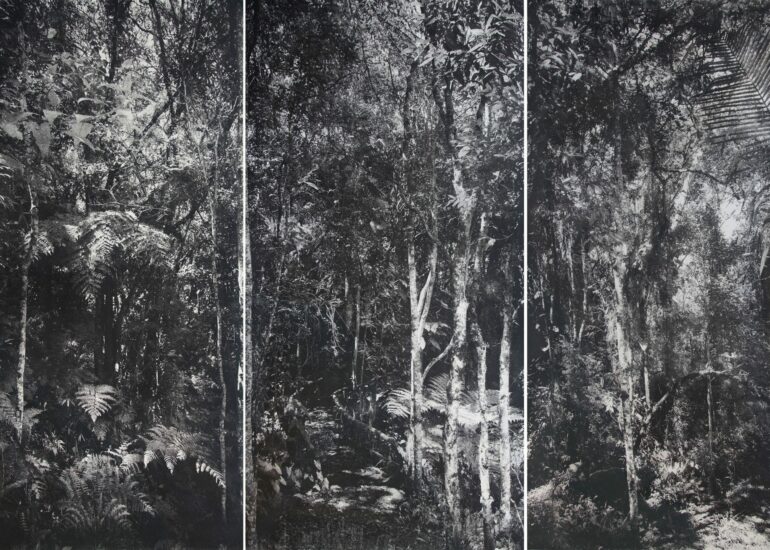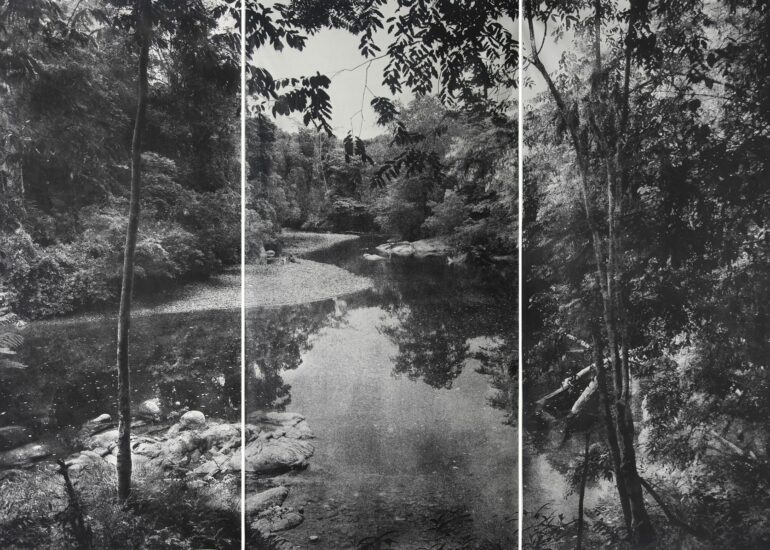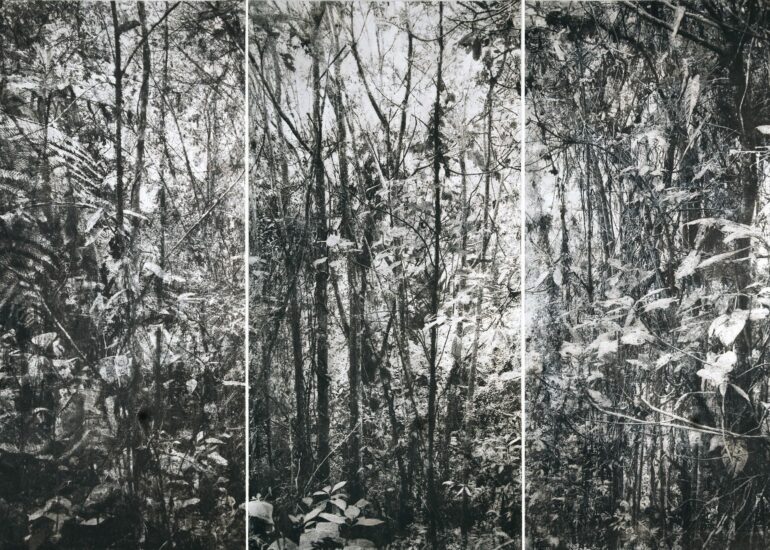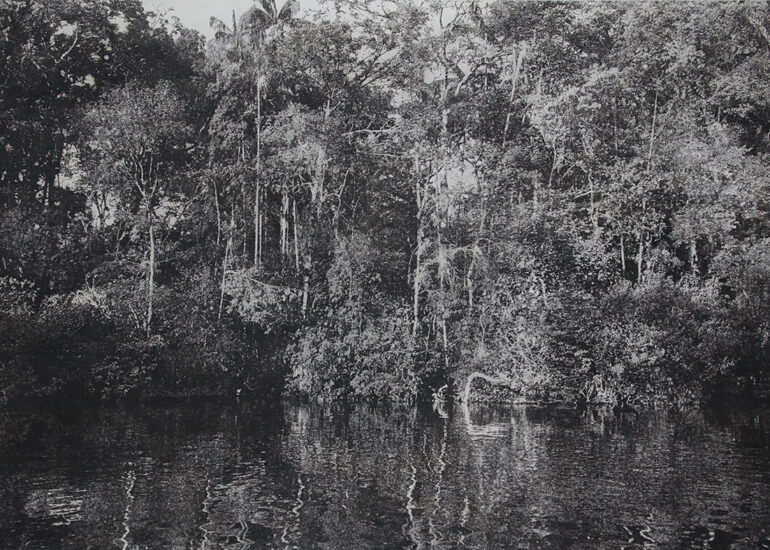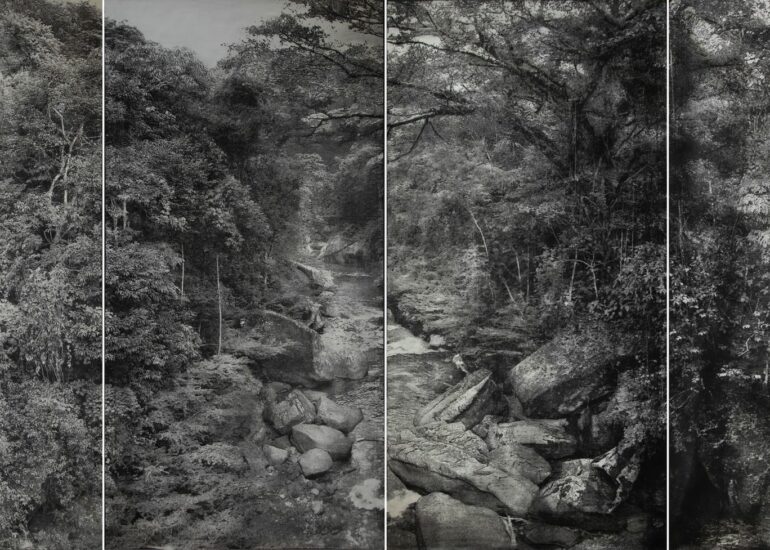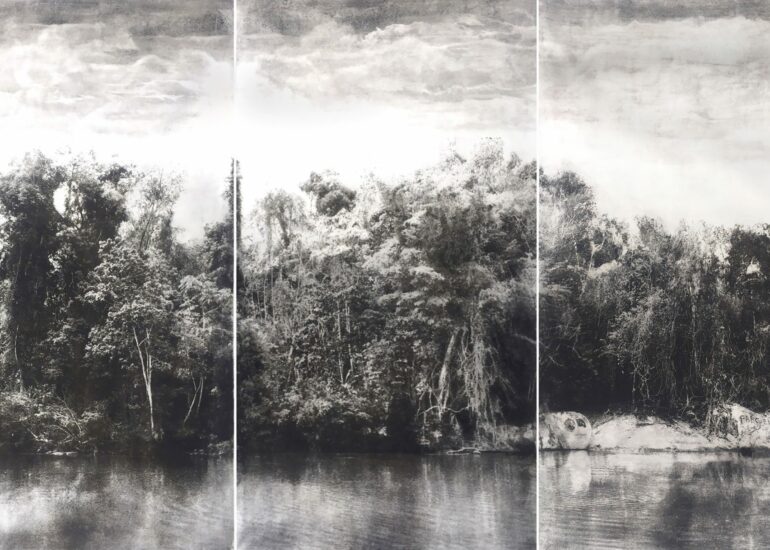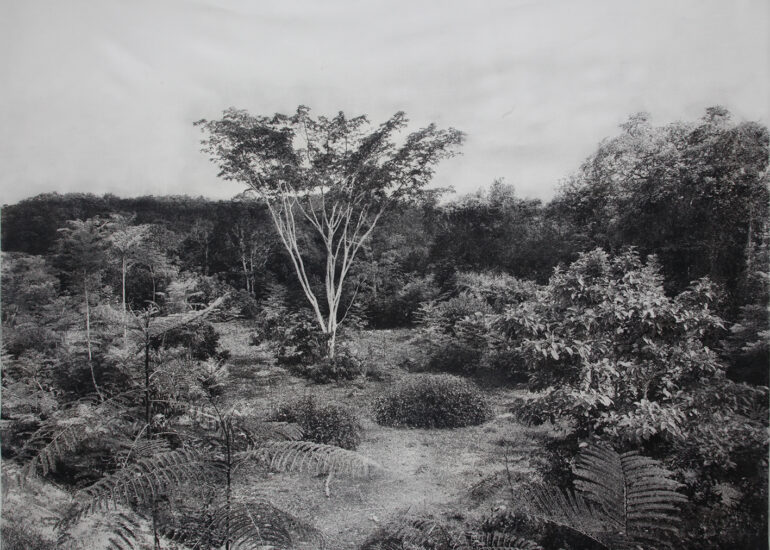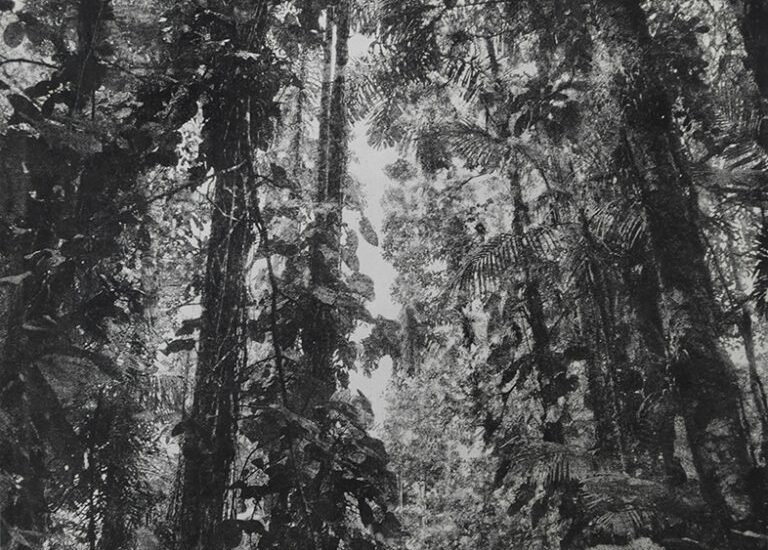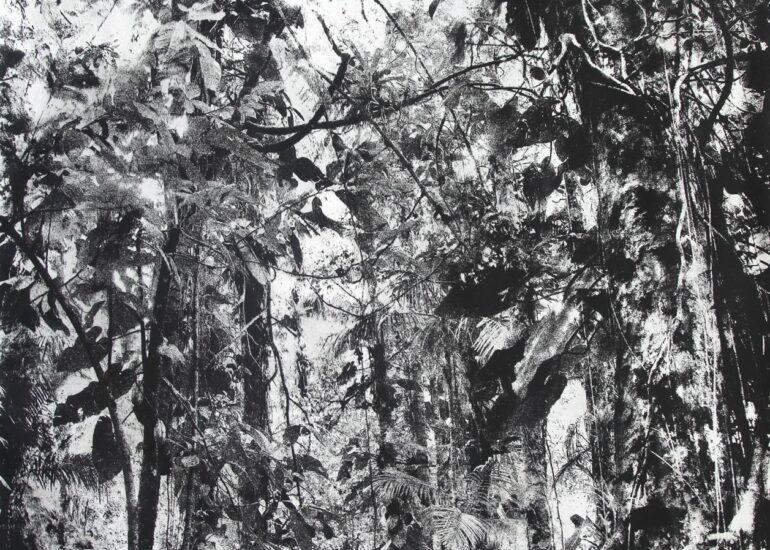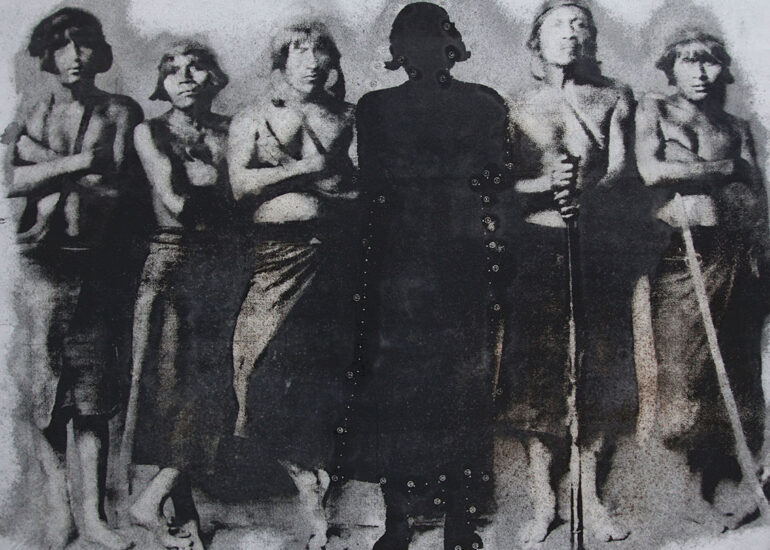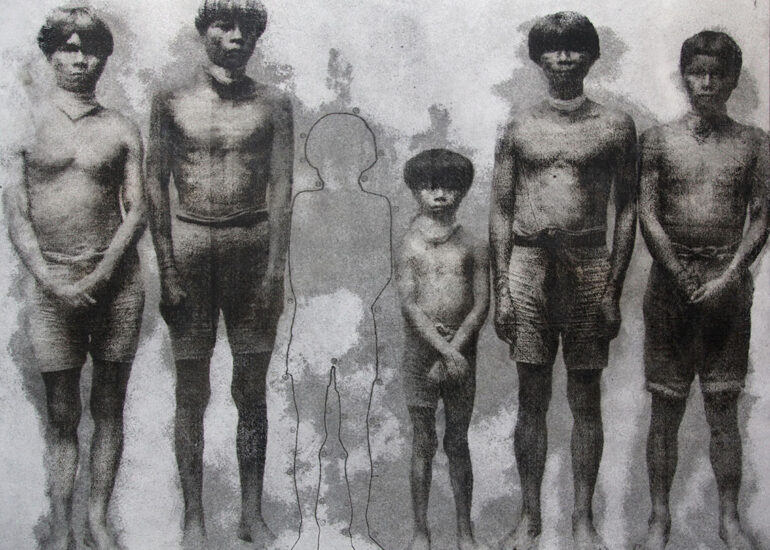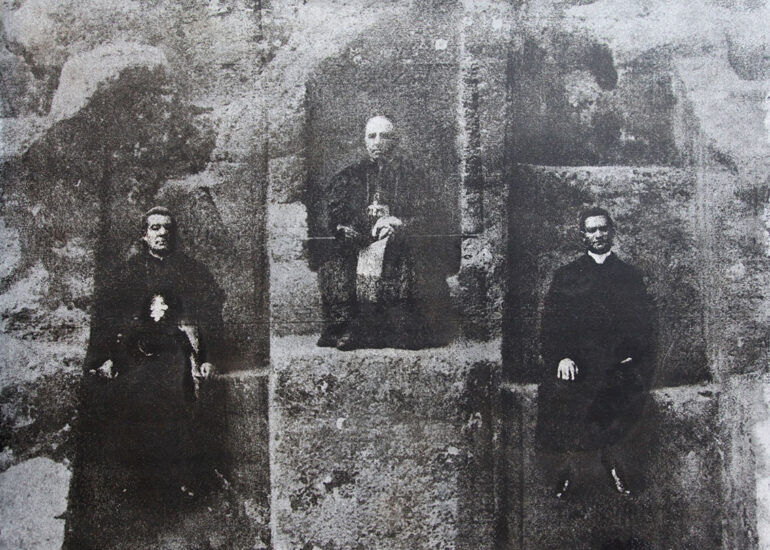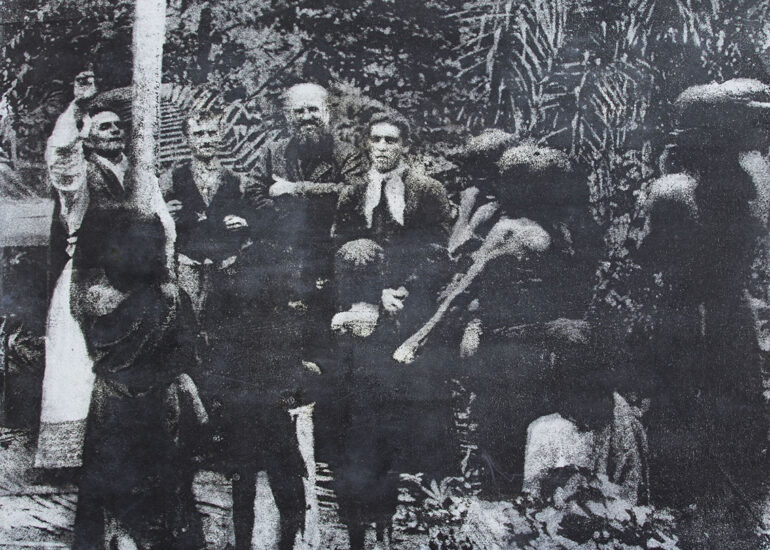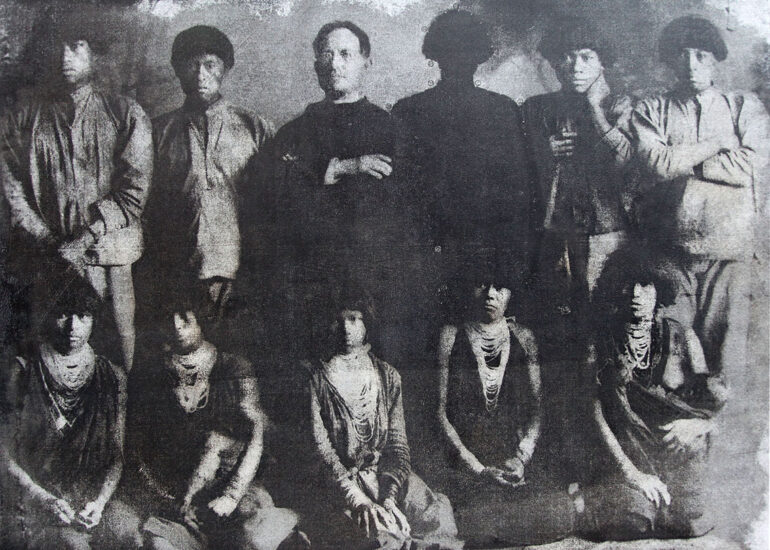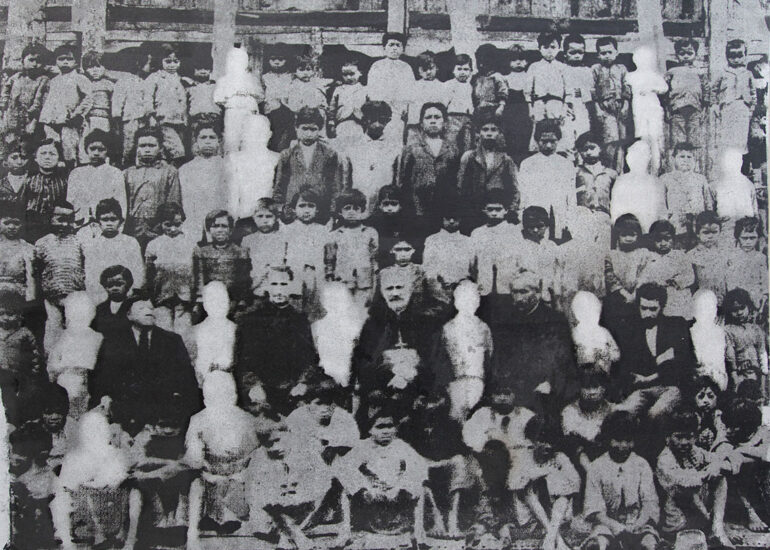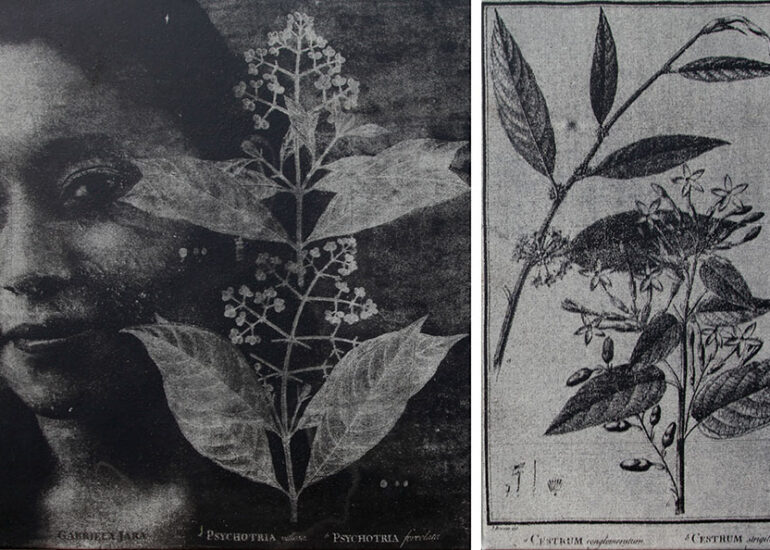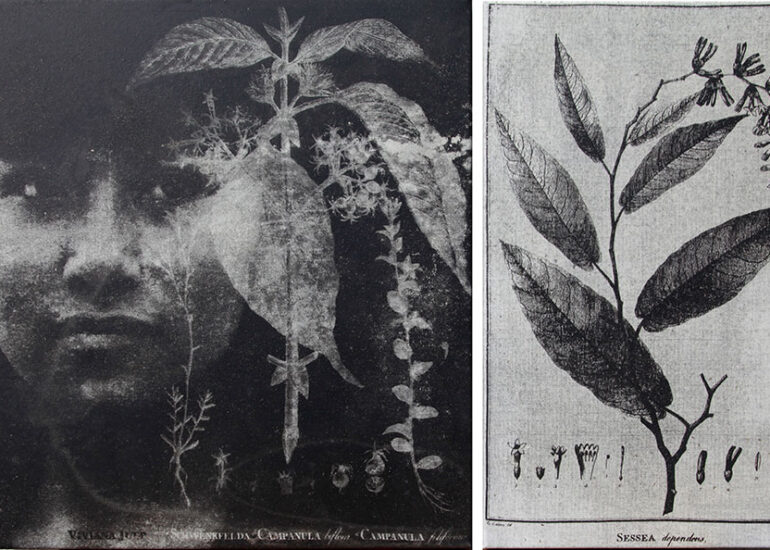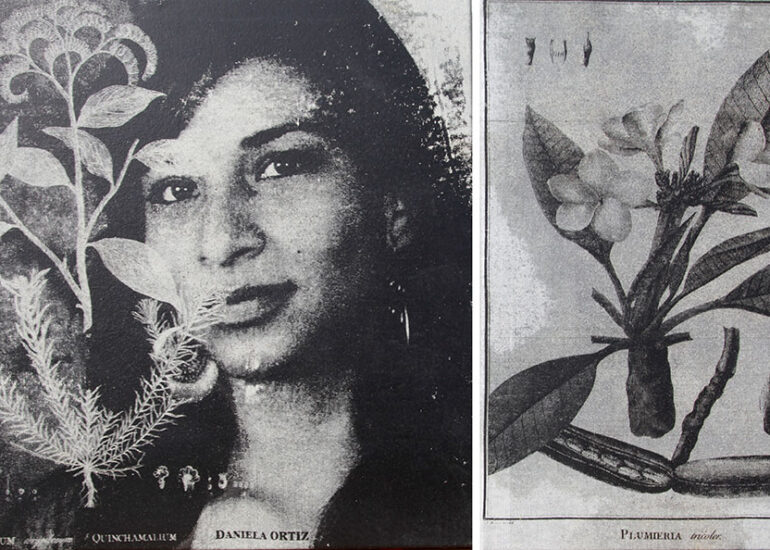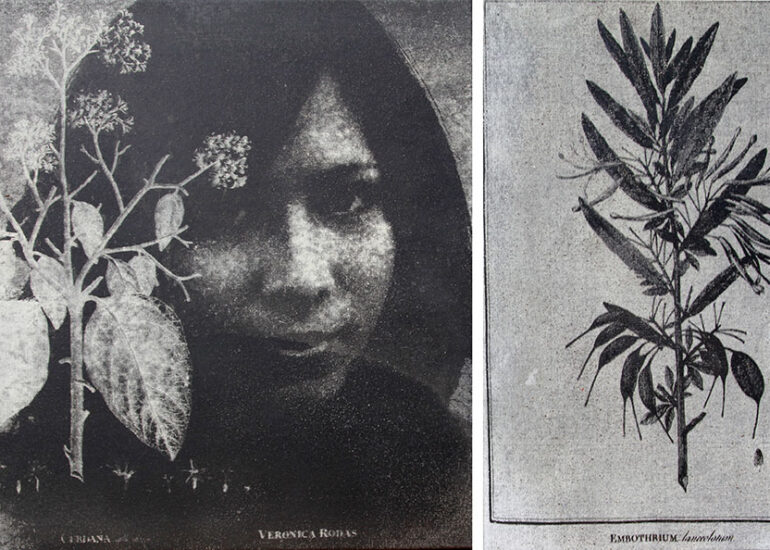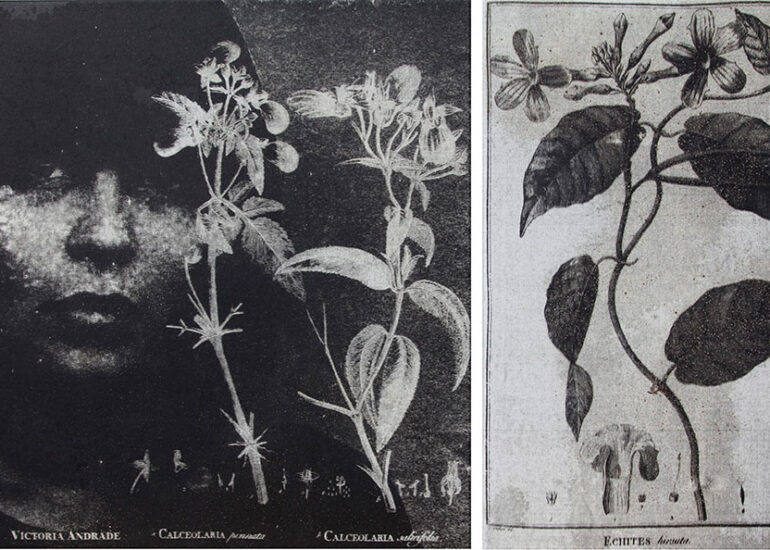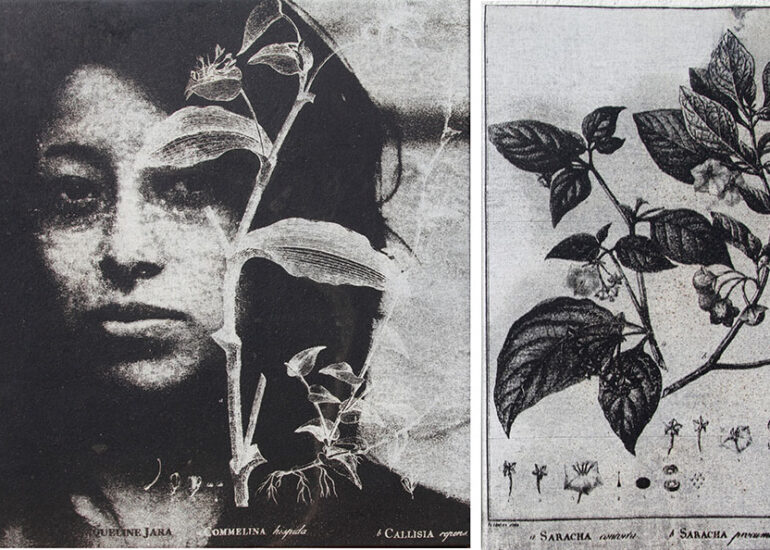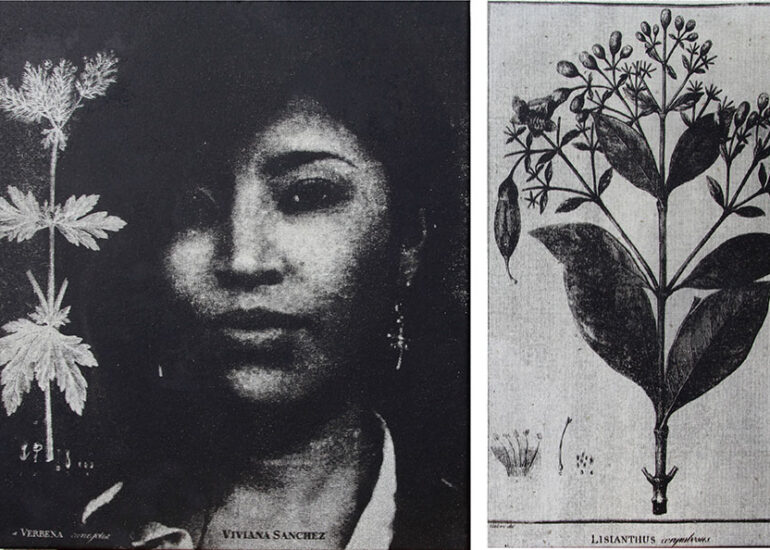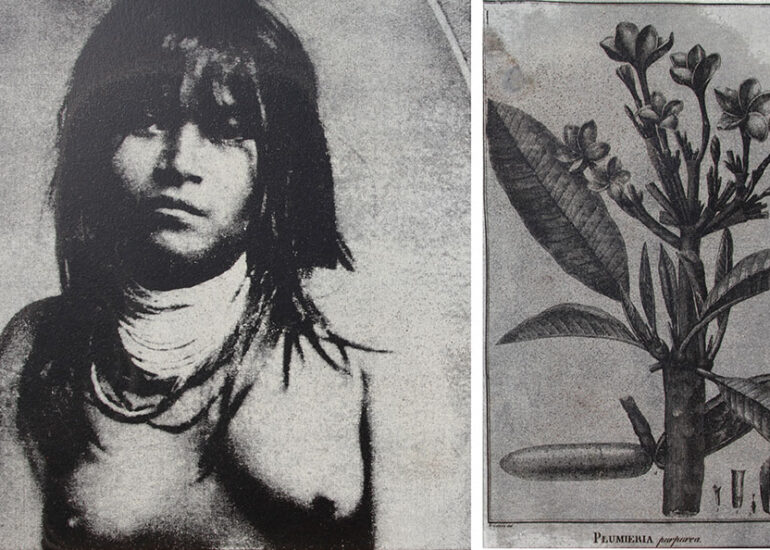Home

BIOGRAPHY
– Born in Ecuador
– Language and Literature in Cuenca University / Lengua y Literatura Universidad de Cuenca
– Visual Arts, Division of Postgraduate Studies. UNAM – México / Artes Visuales, División de Estudios de Post-grado. UNAM – México
– Cinematographic Direction, ECAM. Madrid – Spain / Dirección Cinematográfica. ECAM. Madrid -España
– Lives and works in Colombia / Vive y trabaja en Colombia
2019
– LA Art Show / Los Angeles, USA
2018
– Zona Maco Foto / Mexico
2016
– ArtBo / EFG Bank & ArtNexus Acquisition Award for best Artwork / Bogota, Colombia
2015
– Beyond the Tropics / Parallel exhibition to the Venice Biennale
2013
– Bienal Sel Sur De Panamá
– Loop – Video Art 2013 / Barcelona, Spain
2011
– XI. Biennale of Cuenca / Pecados Originales / curated by Fernando Castro / Cuenca, Ecuador
2010
– VII. Biennale of Architecture and Urbanism/ Puntos de Fuga. Arquitecturas posibles / Museo de Arte Moderno de Medellín / Colombia
– Loop – Video Art 2010 / Barcelona, Spain
– Foto Madrid 2010 / Spain
2009
– Dojima River Biennale 2009: Reflection: The World Through Art directed by Fumio Nanjo Osaka, Japan
– Subversive Film Festival / Zagreb, Croacia
2008
– Shanghai Art Fair 2008
– International Film Festival Oberhausen / Germany
– Arco – Expanded Box / Madrid, Spain
2006
– Singapore Biennale/ Singapore
– LA Freewaves Film Festival / Los Angeles, USA
2005
– International Festival of Digital Cinema / Chile
2003
– Biennale di Venezia / Venice, Italy
2001
– Vll. International Biennale Cuenca / Ecuador
2000
– International Biennale / Córdova-Argentina
1996
– lV. International Biennale Cuenca / Ecuador
2016
– Paraíso Línea negra / Duque Arango gallery / Medellín / Colombia
2015
– Espejos con memoria / Museum Pumapungo / Host and Publisher : PRODUBANCO – Grupo Promerica / Cuenca / Ecuador
2014
– La reposición del Aura / Galería La Cometa / Bogotá, Colombia
– Espejos con memoria / Arte Actual Flacso / Host and Publisher : PRODUBANCO – Grupo Promerica / Quito / Ecuador
2012
– Retrospevtive / Relatos Transversales / curated by Maria Fernanda Cartagena / Centro de Arte Contemporaneo de Quito / Ecuador
2011
– Cineraria /Esquina Arte Contemporaneo / Madrid, Spain
2010
– Cineraria / Arte Actual / FLACSO / Quito, Ecuador
– Cineraria / Proceso Arte Contemporáneo / Cuenca, Ecuador
– Cineraria / TK Galeria d’Art / Barcelona, Spain
2009
– Virus / Katz Contemporary / Zurich, Switzerland
2008
– Multitude / Miki Wick Kim Contemporary Art / Zurich, Switzerland
– Indios Medievales / Centre Cultural Can Fabra / Barcelona, Spain
– Tribeca / Madrid, Spain
2005
– Trans-fiction / Locus Caementitium Gallery / Cologne, Germany
2004
– Ruins of the Future / Astrolavos Gallery / Athens, Greece
– The Blind Castle / KurArt Gallery / San Sebastian, Spain
2002
– Labyrinthi / MS Gallery / Quito, Ecuador
– Estrangement / Plattform 22 / Zurich, Switzerland
2001
– En Ausencia (In Absence) / Instituto Cultural de Providencia / Santiago, Chile
2000
– Devenir Animal (Become Animal) / La Galería / Quito, Ecuador
1999
– Devenir Animal (Become Animal), Museo de Arte Moderno / Cuenca, Ecuador
1998
– Incarnation (Installation/performance) / El Pobre Diablo / Quito, Ecuador
1997
– Bestiary & Heretic Procession (Performance) / Casa de las Galerías / Cuenca, Ecuador
1994
– Process / Carole Jones Gallery / Chicago, USA
– Process / Museum of Modern Art / Cuenca, Ecuador
1991
– Transitions / David Perez MacCollum Gallery / Guayaquil, Ecuador
1990
– Hanan Urin / The French Alliance / Quito, Ecuador
2016
– The Americas Collection Gallery/ Miami, USA
2015
– Art BO /International Art Fair of Bogota, Columbia
2014
– Art BO /International Art Fair of Bogota, Columbia
– ‘IB ET NUNC’ / Sobre paradojas democráticas / Barcelona, Spain
– Museo Barjola, Tiempo de Progresso / Gijón, Spain
2013
– Antioquias. Museo de Antioquia / Libres de toda mala raza / Medellín- Colombia
– Cosmovideografías. Videroarte latinoamericano/ Centro Nacional de las Artes/ México D.F
2011
– Courtisane / Figures of Speech / Brussel, Belgium
2010
– Sinergias / Macuf / La Coruna, Spain
– Sinergias / Meiac / Badajoz, Spain
2009
– Endgame- Blue Gold / DARB 1718 – Contemporary Art and Culture Center / Cairo, Egypt
– MADATAC / Madrid Festival of Contemporary Audio-Visual Arts / Madrid, Spain
– Maritime Chronicles #2 / NAIRS / curated by Sarah Zuercher / Scuol, Switzerland
– Cultura, probeza y megapolis / Marcelino Botin / curated by Kevin Power / Santander, Spain
2008 – 2009
– Madrid Mirada / Traveling exhibition throughout South America
2008
– Low key / Marcelino Botín – Villa Iris / curated by Iria Candela / Santander, Spain
– Arquetypos / MAAC (Museo Antropologico y de Arte Contemporaneo) Guayaquil, Ecuador
– Mao Dupla, SESC Paulista / Sao Paulo, Brazil
– Madrid Mirada / Circulo de Bellas Artes/ Madrid, Spain
2007
– IKF Latin American Art Auction – Cisneros Art Foundation / Miami, USA
– Art Basel – Swiss Art Awards / Basel, Switzerland
– Scope / Basel, Switzerland
2006
– CACT – Centro d’Arte Contemporanea / Ticino, Switzerland
– Stopover / Fri-Art – Centre d’Art Contemporain / Fribourg, Switzerland
– Políticas del Arte – Seminarios / Múrcia, Spain
– Casa Amèrica Catalunya / Barcelona, Spain
– Swiss Film & Video Festival / Thun, Switzerland
2005
– Marcelino Botin / Santander, Spain
– Kunstmuseum Luzern / Switzerland
– Art Basel – Swiss Art Awards / Basel, Switzerland
2004
– Sad Co. – The Blind Castle / Artiade / Athens, Greece
2002
– Mater Materia / Palazzio Mediceo; Seravezza, Italy
2001
– Políticas de la diferencia (Politics of Difference) – Iberoamerican Art of the twentieth century; Travelling Exhibition / (by Kevin Power) / Museos de la comunidad Valenciana, España
– City of Anger / Aksanat Gallery / Istanbul, Turkey
1998
– Corps / Maison de la Amerique Latine / Paris, Francia
– Rahn Gallery / Zurich, Switzerland
1997
– Contemporary Ecuador / Casa de America / Madrid, Spain
– Matrix (Installation) / Patrimonio Cultural / Cuenca, Ecuador
1993
– Futuro Rupestre / Museo de la Academia de San Carlos / México
1992
– 500 Years / Traveling Exhibition / Brussels, Amberes, Binches – Belgium
1991
– Contemporary Salon of Latin American Painting / Piura, Peru
1990
– Latin America Presents / National Museum of Fine Arts / Santiago, Chile
2015
– Presea José Domingo Lamar / Cuenca, Ecuador
2013
– Condecoración al Artista del año / Cámara de Comercio de Quito, Ecuador
2004
– Marcelino Botin Award / Santander, Spain
2000
– First Prize / Salon Nacional Fundación de Guayaquil / Quito, Ecuador
1996
– Mention of Honor / V Bienal de pintura / Cuenca, Ecuador
– Mención de Honor / Salón de Octubre / Guayaquil, Ecuador
1992
– Fist Prize / Salón Nacional de Arte “Fundación Exadra” / Quito, Ecuador
1991
– Third Prize / Salón de Pintura Contemporánea Latinoamericana / Piura, Peru
1990
– Third Prize / Salón Nacional de Octubre Guayaquil / Ecuador
1989
– Scholarships Inte granted by II Bienal de Pintura de Cuenca y USIS
(United States International Services) / Washington, US
2009
– After Hitchcock – Micro Relatos / One channel video, color, sound / 4 min.
2008
– Indios Medievales / One channel video, color, sound, 6 min. 16 sec.
– La Casa Ideal / One channel video, color, sound, 6 min.
2007
– Ariadne PF-Z26 / One channel video, color, sound, 2 min.
2006
– The Myth of Sisyphus / Two channel video, color, sound, 25 min. 43 sec.
– Fähre / Documentary Film / Switzerland / color, sound, 35 min.
2005
– 5 Dots / One channel video, color, sound, 11 min. 11 sec.
– Contagion / Two channel video, color, sound, 17 min. 12 sec.
2004
– 6m m3–The Darkroom / One channel video, color, sound, 30 min. 6 sec.
2003
– Sad Co. – The Blind Castle / Three channel video, color, sound, 25 min. 44 sec.
2002
– The Mirror Project / One channel video, color, sound, 1min. 45sec
2001
– The Whole Destiny by Foot / One channel video, color, sound, 6 min.
– by PRODUBANCO – Grupo Promeri, “Tomas Ochoa”, in: Espejos con Memoria (or download here); Text by : María Fernanda Cartagena, Fernando Castro Flórez, José Luis Corazón Ardura, Fumio Najo, Genoveva Mora, Tomás Ochoa; ISBN: 978-9942-20-528-5; pp.1 – 220.
– by Miguel Conzalez, “Tomas Ochoa”, in: Art Nexus, Miami 2014, pp. 46-49
– by Iria Candela, “Tomas Ochoa”, in: Art in Latin America, London 2013, Tate Modern, pp.6, 16, 82-86, 94, 120, 125, 133, 135& 106-110
– by Rodolfo Kronfle Chambers, “Tomas Ochoa”, in: Historia(s), Ecuador, 2011, rioRevuelto ediciones pp. 88-89 & 106-110.
– by Maria Belen Moncayo, “Tomas Ochoa”, in: Ecuador – esperimental audiovisual artists, Ecuador, 2011, pp. 83.
– “Tomas Ochoa”, in: Loop Barcelona, 2010, pp. 48-49.
– “Tomas Ochoa”, in: 100 Video Artists, Exit Book, Madrid, 2010, pp. 314-317.
– by Carlos Jimenez, “La multitud segun Tomas Ochoa”, in: ArtNexus, No. 74, USA 2009.
– by Trevor Hoppen, “Tomas Ochoa”, in: Gatsby Magazine, Fall-Winter 2009, pp. 142-149.
– “Tomas Ochoa”, in: Bienalarte. Revista de la Bienal de Cuenca, Ano 3. No 7, Fall 2009, Cover and pp. 7-13.
– “Tomas Ochoa”, in: BG Magazine, No. 046, Ecuador 2009
– by Johannes Bobrowski, “Los artistas: Solo nos queda un alfabeto”, in: Cultura, probeza y megapolis, Marcelino Botin Foundation, Santander, 2009, pp. 52-54.
– by Joaquin Barriendos, “Experimental ethnography in Tomas Ochoa’s Medieval Indians Project”, in: LatinArt, 2009.
– by Beatrix Vignoli, “La ciudad desplegada en sus miradas”, in: Pagina12, 17.02.2009.
– “Tomas Ochoa”, in: Low Key, Marcelino Botin Foundation, Santander, 2008, p.70.
– by Joaquin Barriendos, “Apetitos extremos – La colonialidad del ver y las imagenes-archivo sobre el canibalismo de Indias”, in: Eipcp, 2008.
– by Manuel Sendon y Xose Luis Suarez Canal, “Madrid Mirada: un proyecto”, in: Biblioteca de Mexico, No. 108, 2008, pp. 22-32.
– “Tomas Ochoa – La casa ideal”, in Madrid Mirada, Madrid, 2008, p.120-121.
– “Tomas Ochoa”, in: 100 Latin-American Artists, Exit Book, Madrid, 2007, pp. 338-339.
– “Tomas Ochoa” – Contagion”, in Day After Day 2003 – 2007, in: FRI-ART – Centre d’Art Contemporain, Fribourg, 2007, pp. 100-101; p. 429.
– “Tomas Ochoa”, in: IKF Latin America Art Auction 2007 , Cisneros Art Foundation, Miami, 2007.
– by Irma Arestizabal, “Tomas Ochoa – The Myth of Sisyphus”, in: Belief, Singapore Biennale, Singapore, 2007, pp. 98-99.
– Politicas del Arte, Spain, 2007
– Singapore Biennale. in: universes-in-universe, Germany, 2006
– by Dominique von Burg, “Stopover im Fr-Art Centre d’Art Contemporain”, in: Kunstbulletin, No. 4, 2006, p. 56.
– by Thomas Hilger, “Tomas Ochoa – Trans-Fictions” in:Parapluie, Germany, 2005
– “Tomas Ochoa – Trans-Fictions” in: Opus C, Germany, 2005, pp. 88-90.
– “Tomas Ochoa”, in: Itinerarios 04-05, Marcelino Botin, Spain, 2005, pp. 104-111.
– “Tomas Ochoa”, in: El Pais, Spain, 8.2.2005.
– “Tomas Ochoa”, in: BG Magazine, No. 14, 2005, pp. 18-20.
– “Tomas Ochoa”, in: El Diario Vasco, Spain, 6.2.2004.
– PhotoBook, Greece, 2004.
– “Tomas Ochoa”, in: LUXflux, Italy, 2004.
– “Tomas Ochoa – La Biennale di Venezia”, in: universes-in-universe, Germany 2003.
– by Carlos Jimenez, “Venice Biennale; Dreams and Conflicts or The Imaginary Cartographies of Dissent and Marginality”, in: ArtNexus, No. 50, USA, 2003, pp. 60-66.
– Franccesco Bonami, in: Dreams and Conflicts, in: Biennale di Venezia, Italy, 2003.
– Archipielago de Imagenes, in: IILA – Istituto Italo Latino Americano, Italy, 2003.
– Globalization, Nomadism, Identity, in: Vll International Biennale Cuenca, Ecuador 2002.
– by Marco Antonio Rodriguez, Grandes del Siglo Veinte (The Great of the Twentieth Century), Ecuador, 2002.
– by Marco Antonio Rodriguez, Palabra e Imagen 2 (Word and Image 2), Ecuador, 2002.
– by Kevin Power, Politics of difference – Iberoamerican Art of the twentieth century, Generalitat Valenciana, Spain, 2001.
– Nuevos Cien Artistas (Hundred New Artists), in: Mundo Diners , 2001, Cover and pp.
– De la Inocencia a la Libertad (From Innocence to Liberty), Ecuador 1998, Cover and pp.
Available artwork
Línea Negra
PECADOS ORIGINALES
mixed media & gunpowder on canvas / 2011
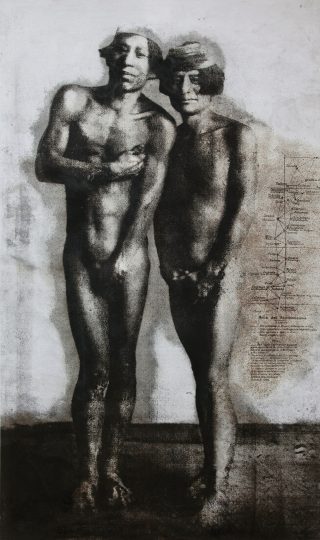
In this Project I try an allegoric exercise based on photo images from the end of the 19th Century and the beginning of the 20th Century related to the geodesic and catholic missions that came to Ecuador during those years. These images are a product of a Colonial view linked to the racial theories, the physiognomic discourses and the exoticism that impregnated the photography of European explorers of those times. In this piece I pretend to de-codify this view, and to dismantle the discourses that gave rise to a false and exclusionary imaginary, based on which we have built the hallmarks of our identity. With the Western view to others, we have built our own image.
The French geodesic missions, with their cartographic projections – apparently neutral, concealed the territorialization and the imperial spatial control in a discursive, cartographic and military manner. At the same time, the catholic missions toward the Ecuadorian Amazon jungle were aimed to complement the Colonial project of the population control. I cannot stop confirming in the archive images the paradox between the preference of European voyagers and scientists of exposing nude and exotic Indians in their photos, while the modest Church dressed them.
The archive photo works, on one side, exercising as a repository of the memory, and – at the same time – as a possibility of an alteration of the same memory, and it is here where I ground my strategy of allegoric substitution. When I develop the photos to big formats, substituting the photographic grains with gunpowder grains (expanded field of the painting), and the lines in the maps as lines of fire, I propose an exercise of metonymic displacement and reattribution of meaning of those images. Images that – when burned – evoke the underlying violence of the Colonial processes and the representational structures, with the purpose of deeply questioning the foundational myths, the measurements to which we have been subjected, and the mirror games in which we have been seeing each other, and we continue doing so.
En este proyecto procuro un ejercicio alegórico a partir de imágenes fotográficas de finales del siglo XIX y principios del XX relacionadas con las misiones geodésicas y eclesiásticas que tuvieron lugar en el Ecuador de esa época. Dichas imágenes son el producto de una mirada colonial ligada a las teorías raciales, a los discursos fisonómicos y al exotismo que impregnaba la fotografía de los expedicionarios europeos decimonónicos. En esta pieza intento decodificar esta mirada y desmontar los discursos que dieron lugar a un imaginario ficticio y excluyente a partir del cual hemos construido nuestras señas de identidad. Con la mirada occidental hacia los otros, hemos construido nuestra propia imagen.
Las proyecciones cartográficas aparentemente neutrales de las misiones geodésicas francesas, ocultaron una territorialización y control espacial imperial de forma discursiva, cartográfica y militar. Al mismo tiempo, las misiones eclesiásticas hacia la Amazonía ecuatoriana debían completar el proyecto colonial de control poblacional. No dejo de constatar en las imágenes de archivo, esta paradoja: mientras los científicos y viajeros Europeos preferían para sus fotografías a los indios exóticos y desnudos, la iglesia pudorosa, los vestía.
La fotografía de archivo funciona, por un lado, como ejercicio repositorio de la memoria y al mismo tiempo, como posibilidad de alteración de ésta. Es aquí en donde fundamento mi estrategia de sustitución alegórica. Al ampliar fotografías a grandes dimensiones sustituyendo el grano fotográfico por granos de pólvora (campo expandido de la pintura) y las líneas de los mapas como líneas de fuego, propongo un ejercicio de desplazamiento metonímico y resignificación de dichas imágenes. Imágenes que al ser quemadas evocan la violencia subyacente de los procesos coloniales y sus estructuras de representación con el objeto de poner en cuestión los mitos fundacionales; las mediciones de las que hemos sido objeto; y el juego de espejos en los cuales nos hemos y continuamos mirándonos.
FLORES DE CENIZA
mixed media & gunpoweder on canvas / 2012
The Coloniality of the being refers to the modes of Colonial representation, and to the manner in which this imaginary persist in own self representation. This project has emerged as a result of the immersion we have done in the first Botanical expedition to The Americas from Europe in 1777. Science in the 18th Century in America was inseparable from the political and economic interests, and the said practices constituted fundamental ways of control and domination, of human beings as well as of nature.
Behind the apparent neutrality of the discoveries hidden you could find act or dominance and appropriation. Whomever recognized for the first time a place, a plant, a medicine, proclaimed the right of possession. European believed they were the first humans to discover American plant.
Flora Peruvian is the first book of Natural History that was printed in America, and based on its illustrations we have embarked in this project. The European idea of racial superiority with respect to those conquered was fundamental to the establishment both of intersubjective relations as well as to classify the World and Nature. Thereby, the Colonial view remains in the savage and primitive body as if it was a Botanical species, either are part of Nature, the scenery, and are to be dominated and exploited to serve the imperial expansion project. The classifying photography of the 19th Century of an indigenous woman (with no name) that I use in this project is a perfect example of this Colonial view.
The images of the “Cholas” (young Indian and Mestizo women) were taken in the streets of the city of Cuenca, in Ecuador, one day of September of 2012. With these images I try to disrupt the representational regimes and the aesthetic prejudices of a society isolated in the middle of the Andes that remains hell-bent in praising its Spanish inheritance: “Chola cuencana …. You are Spain that signs in the Cuenca of Ecuador.” 1
1. Rafael Carpio Abad: “La Chola Cuencana” (emblematic song of Cuenca)
La colonialidad del ser se refiere a los modos de representación colonial y a la manera como ese imaginario persiste en nuestra auto representación. Este proyecto ha surgido como resultado de la inmersión que hemos hecho en la primera expedición botánica hacia América desde Europa en 1777. La ciencia del siglo XVIII en América fue inseparable de los intereses políticos y económicos; dichas prácticas constituyeron importantes formas de control y dominación tanto de la naturaleza como de los seres humanos.
Tras la aparente neutralidad de los descubrimientos se escondían actos de apropiación y dominio. Quien por primera vez reconoce un lugar, una planta, una medicina proclama su derecho de posesión; los europeos creían ser los primeros hombres en descubrir las plantas americanas.
Flora Peruvian es el primer libro de historia natural que se hizo en América y es a partir de sus ilustraciones, que hemos emprendido este proyecto. La idea europea de superioridad racial respecto a los conquistados fue fundacional para establecer tanto las relaciones intersubjetivas, como la clasificación del mundo y a la naturaleza. De este modo, la mirada colonial se detiene en un cuerpo salvaje y primitivo como si de una especie botánica se tratase, tanto uno como otra son parte de la naturaleza y del paisaje y han de ser dominados e instrumentalizados para el proyecto de expansión imperial. La fotografía clasificatoria del siglo XIX de una indígena (sin nombre) que uso en este proyecto ejemplifica esa mirada colonial. Las imágenes de “Cholas” (muchachas indias y mestizas) fueron hechas en las calles de Cuenca, Ecuador; un día de Septiembre de 2012. Con ellas intento perturbar los regimenes de representación y los prejuicios estéticos de una sociedad enclavada en los Andes e ingenuamente empeñada en exaltar su progenie española: “chola cuencana… eres España que canta en Cuenca del Ecuador” 1
1. Rafael Carpio Abad: “La Chola Cuencana” ( Canción emblema de esta ciudad)
CONTACT
REPRESENTED BY
LACOMETA GALERIA
Carrera 10 # 94A – 25 / Bogota, Colombia
Phone +57 1 601 94 94
[email protected]
www.galerialacometa.com
LACOMETA GALERIA
Carrera 10 # 94A – 25 / Bogota, Colombia
Phone +57 1 601 94 94
[email protected]
www.galerialacometa.com
KATZ CONTEMPORARY
Talstrasse 83 / 8001 – Zurich, Switzerland
Phone +41 44 212 22 00
[email protected]
www.katzcontemporary.com
TOMAS OCHOA
tomasochoa[@]yahoo.com
ANDRIANA MEYER
andriana[@]tomasochoa.com

